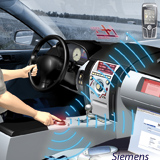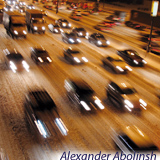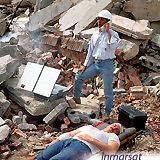|
Mitigation |
|
||||||||
|
Although ICTs account for only around 2.5 per cent of total greenhouse gas emissions, they have the potential to be used in reducing the other 97.5 per cent of emissions in other sectors. They can do this primarily by creating opportunities for the abatement (or displacement) of existing applications that generate carbon dioxide (CO2). Probably the most obvious area for carbon abatement opportunities offered by ICTs is in reducing, or substituting for, travel requirements. The ICT industry offers a number of different tools and services which can theoretically replace travel, especially business travel, which range from the mundane (for example, e-mail, phone calls, text messaging) to the sophisticated (high-performance videoconferencing). A second area where ICTs have been extensively used for reducing CO2 emissions caused by transport is in the use of intelligent transport systems (ITS). These systems are used in applications such as “eco-driving”, congestion charging, as well as for traffic management and parking optimization. A third way is through “dematerialization”, or the replacement of “atoms” with “bits”. An example of this is the current shift under way in the market for pre-recorded movies and music away from physical distribution (such as DVDs and CDs) to online delivery. ITU is also making its own modest contribution to dematerialization through the long-term shift away from paper-based to online publishing, which reached its culmination in 2007 with the decision of the ITU Council to make all ITU–T Recommendations permanently free-of-charge online (see the box below). Another important way in which ICTs can mitigate climate change is in the area of disaster relief. ITU has had a long-standing mission to promote the use of telecommunications for disaster relief and for emergency services. These can be particularly important in mitigating the effects of climate change, for instance from flooding due to rising sea levels, or increased incidence of violent storms and hurricanes. Virtually all ITU–T study groups are active in this area, notably ITU–T Study Group 2 which has the lead on telecommunications for disaster relief/early warning. Similarly all ITU–R study groups carry out studies and develop ITU–R Recommendation/reports and handbooks on the use of different radiocommunication services for warning the public early of impending disasters, as well as for planning and relief operations. In many cases, when disaster strikes, the “wired” telecommunication infrastructure is significantly or completely destroyed and only radiocommunication services can be used for disaster-relief operations — especially radio amateurs and satellite systems. In order to facilitate the use of radio equipment for mitigating the negative effect of disaster caused by climate change and other disasters, Resolution 646 of WRC-03 strongly recommends use of the regionally harmonized bands for public protection and disaster relief in emergency situations. The Radiocommunication Assembly in 2007 (RA-07) approved Resolutions ITU–R 53 and 55 instructing all ITU–R study groups to carry out studies on the use of radiocommunication in disaster prediction, detection, response, mitigation and relief. WRC-07 further advocated the development of spectrum management guidelines for radiocommunication in emergency and disaster relief, as well as the identification and maintenance of available frequencies for use in the very early stages of humanitarian assistance intervention in the aftermath of disaster. ITU is also developing a database for frequency management in disaster situations (Resolution 647 of WRC-07).
|
|



